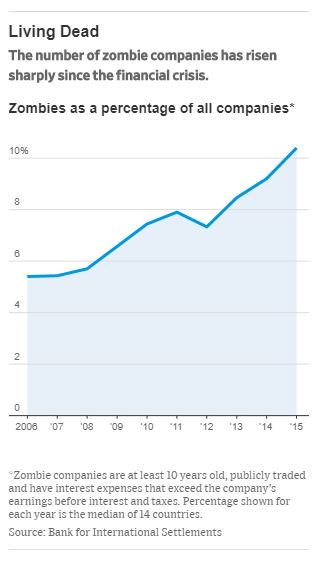(p. A15) HONG KONG — The comments were couched in careful language, but the warning about China’s direction was clear.
China grew to prosperity in part by embracing market forces, said Wu Jinglian, the 88-year-old dean of pro-market Chinese economists, at a forum last month. Then he turned to the top politician in the room, Liu He, China’s economic czar, and said “unharmonious voices” were now condemning private enterprise.
“The phenomenon,” Mr. Wu said, “is worth noting.”
Mr. Wu gave rare official voice to a growing worry among Chinese entrepreneurs, economists and even some government officials: China may be stepping back from the free-market, pro-business policies that transformed it into the world’s No. 2 economy. For 40 years, China has swung between authoritarian Communist control and a freewheeling capitalism where almost anything could happen — and some see the pendulum swinging back toward the government.
. . .
China’s leadership turned to entrepreneurs in the late 1970s, after the government had led the economy to the brink of collapse. Officials gave them special economic zones where they could open factories with fewer government rules and attract foreign investors. The experiment was an unparalleled success. When extended to the rest of the country, it created a growth machine that helped make China second only to the United States in terms of economic heft.
Today, the private sector contributes nearly two-thirds of the country’s growth and nine-tenths of new jobs, according to the All-China Federation of Industry and Commerce, an official business group. So pressures on private businesses could create serious ripples.
“The private sector is experiencing great difficulties right now,” wrote Mr. Hu, the retired minister, who as the son of a former top Communist Party leader is often a voice for reform in China, in an essay posted online last Thursday. “We should try our best not to replicate the nationalization of private enterprise in the 1950s and the state capitalism.”
. . .
Private entrepreneurs are loath to speak out for fear of attracting official condemnation. But signs of distress aren’t hard to find.
Last month, Chen Shouhong, the founder of an investment research firm, asked a group of executive M.B.A. students — many of whom already owned publicly listed companies — to choose between panic and anxiety to describe how they feel about the economy. An overwhelming majority chose panic, according to a transcript. Mr. Chen declined to be interviewed.
. . .
Xiao Han, an associate law professor in Beijing, cited one of Aesop’s fables, of a man trying and failing to stop a donkey from going over a cliff.
“Before long,” Mr. Xiao said, “we’ll probably find a body of a China donkey under the cliff.”
For the full story, see:
Li Yuan. “China Muscles In on Its Free-Market Prosperity.”The New York Times (Thursday, Oct. 4, 2018): A1 & A12.
(Note: ellipses added.)
(Note: the online version of the story has the date Oct. 3, 2018, and has the title “Private Businesses Built Modern China. Now the Government Is Pushing Back.”)

